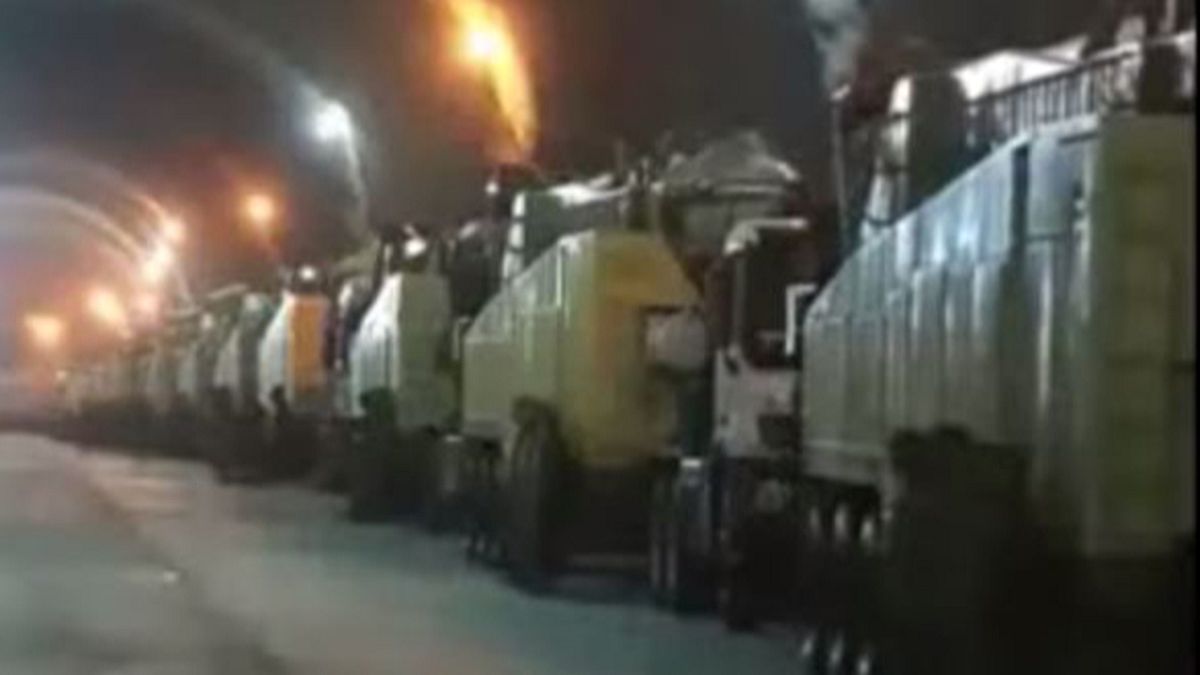Keeping key weapons in a place hard for an enemy to get to them, Iran seeks to ensure the potency of its strike potential. In the latest image
Keeping key weapons in a place hard for an enemy to get to them, Iran seeks to ensure the potency of its strike potential. In the latest image campaign of this kind, Tehran has released video and photos of deep missile bunkers.
How buried are they? The facility shown is about 500 metres under a mountain. This is according to FARS News Agency, although it keeps the location secret.
For comparison, NORAD’s Cheyenne Mountain facility, built in Colorado during the Cold War, is under more than 600 m of rock. In civilian contrast to this, Moscow’s deepest subway section is 85 metres down, New York City’s deepest subway is at 60 m depth, and the London Tube 58.5 m.
The pictures that FARS says were released by Iran’s Islamic Revolution Guards Corps on October 14 display two types of intercontinental missiles, Qadr and Shahab.
Social news agency Storyful reports that the Qadr missiles are close to obsolete. It cites the Federation of American Scientists and The Iran Project.
However, the latest variant of the Shahab, the Shahab-6, can strike targets in Europe and, possibly, the eastern seaboard of the United States.
In the video, long trucks to carry and launch the missiles dwarf officers and crew standing at attention beside them. They are parked in tunnels of near-cathedral proportions, which recede for what appears a vast distance. Though the concrete floor is as polished as the weapons, the walls are rough. With more hi-tech dressing, it is the sort of setting we might see in a James Bond film.
The men the Revolutionary Guard are all bearded. Their constitutional role, rooted in ideology, is to protect Iran’s Islamic system, including preventing ‘foreign interference’.
This branch of Iran’s military was founded after the 1979 revolution, and is estimated to have a strength of 125,000 personnel including ground, aerospace and naval forces.
Whatever the ‘best-before’ date on the missiles, the Iranians’ pride in battle experience was earned in terrible bloodshed.
Iran fought against Iraq from 1980 to 1988, in the 20th century’s longest conventional war, which cost both sides some half a million soldiers’ lives in total, with perhaps as many civilians killed.
The Revolutionary Guards are considered Iran’s most effective military force, the most politically dependable and religiously devout.
In the subterranean war shelter, the FARS video shows smiling troops reviewed by Brigadier General Amir Ali Hajizadeh and backed by a billboard-sized poster of Supreme Leader Sayyed Ali Hosseini Khamenei, head of state and Iran’s most powerful political authority.
Iran tested a new precision-guided ballistic missile on Sunday, October 11th, in defiance of a United Nations ban.
The new missile, named Emad, signals an apparent advance in Iranian attempts to improve the accuracy of its arsenal.
It is a variant of the Shahab-3 missile which has been in service since 2003 but is accurate only to within 2,000 metres.
A researcher at the Center for Strategic and International Studies in Washington, Anthony Cordesman, wrote in January that the Emad would have a range of 1,700 km, 500 metres accuracy and a 750 kg payload.
But Michael Elleman, senior fellow at the International Institute for Strategic Studies, said it would probably take Iran “many years… and dozens of flight tests” to master the new guidance technology.
The Islamic Republic is wary of a potential pre-emptive strike on its nuclear sites by Israel.
Iranian Defence Minister Hossein Dehghan said at a televised news conference: “The Emad missile [which has the range to reach its regional arch-enemy] is able to strike targets with a high level of precision and completely destroy them … This greatly increases Iran’s strategic deterrence capability.”
